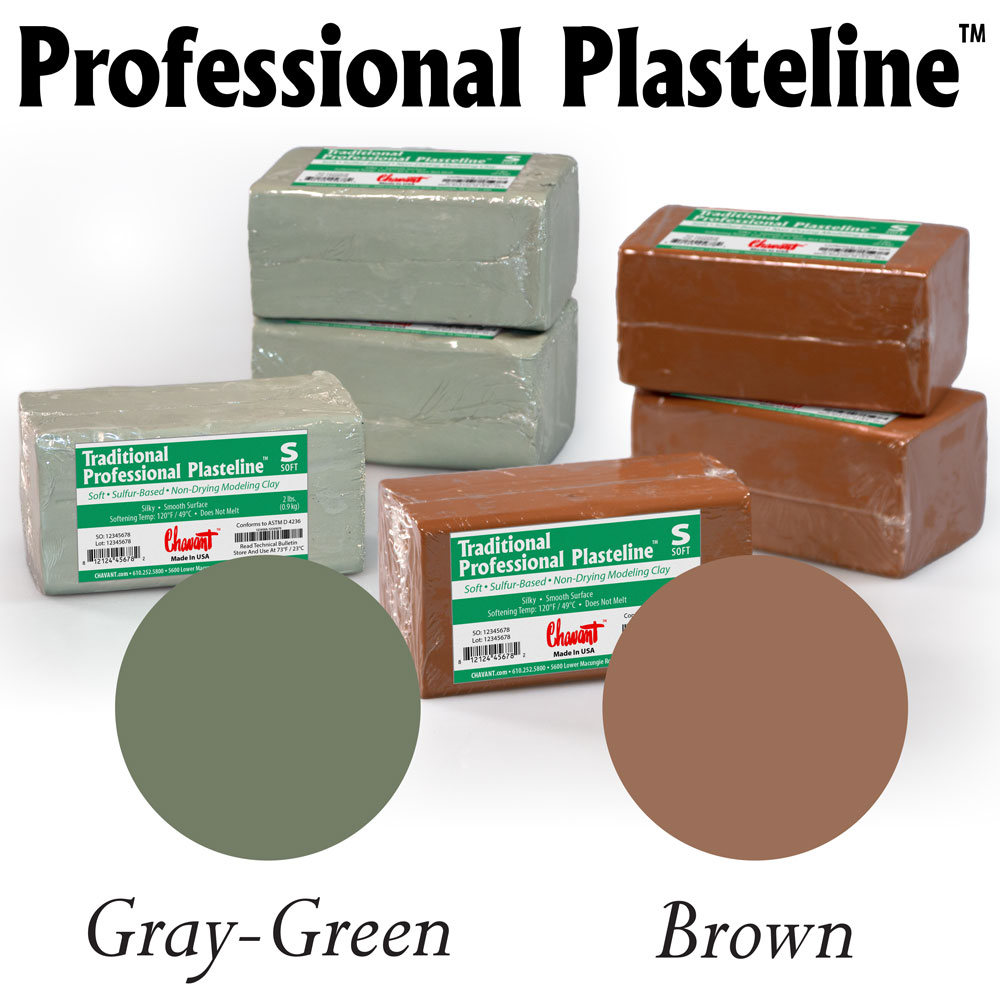Professional Plasteline is the original sculpting clay formula developed by Mr. Claude Chavant in 1892. The name was Trade-Marked by Chavant in 1927. Each of Chavant’s various clays are used by industry professionals and the name “Professional Plasteline” should not limit the use of alternative clays by Professionals. Professional Plasteline is simply a name for one of the Chavant product lines.
The basic formulation of Professional Plasteline has not changed very much during the past 125 years. It is a sulfur based clay body that is pliable at room temperature. It is available in only one grade of firmness. If clients prefer a firmer clay body with similar characteristics to Professional Plasteline they should consider the Industrial Clays CM50 or CM-70. Fantastic sculptural works have been achieved using these products.
Professional Plasteline is one of the softest clays Chavant produces. DaVinci, Extra Soft and Soft, Clayette Soft and Monu-Melt Soft are even softer. The sulfur filler gives this clay a silky feel appreciated by many artists. The clay has some amount of length but is susceptible to cracks when armatures move under the weight of the clay. Professional Plasteline is available in Brown or Gray-Green.
Professional Plasteline is most commonly used by artists for the creation of sculpture and is often used to fill cracks in industrial patterns or to build dams when making splash molds.

